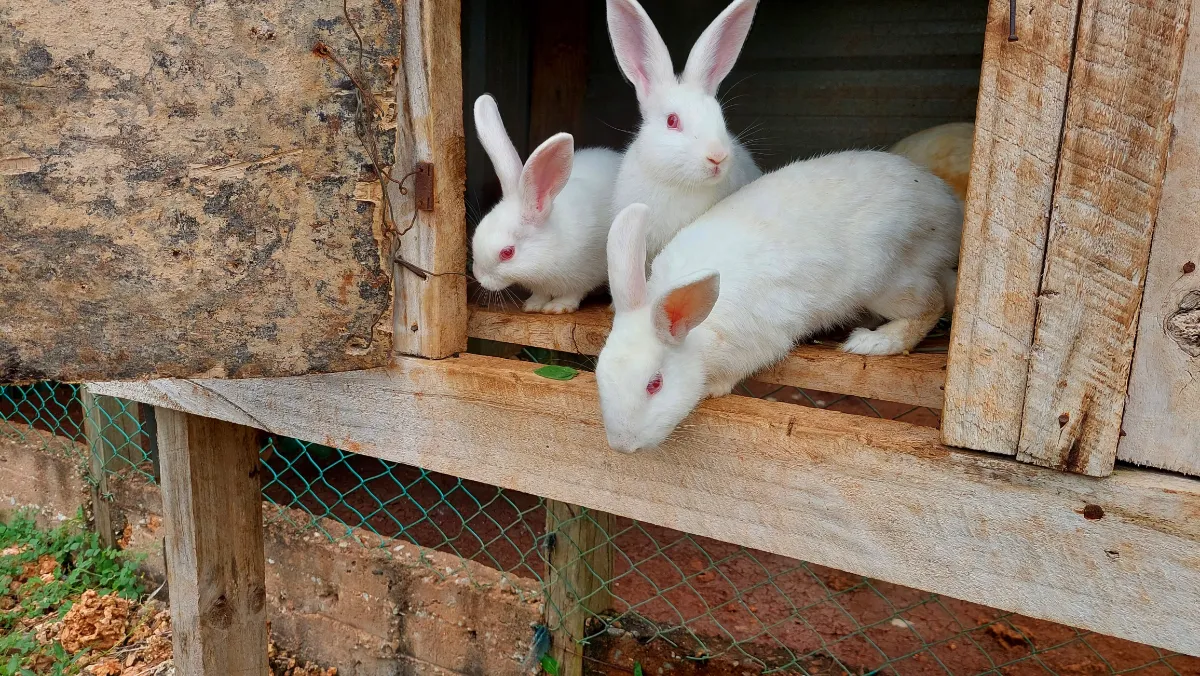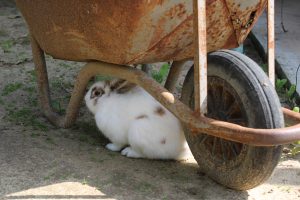Looking for the perfect nesting box for your furry friend? Well, aren’t you in for a treat! There are plenty of options to choose from. Whether it’s a cardboard box, a wooden crate, or even a plastic container, you’ll find the ideal haven for your rabbit.
And if you’re feeling crafty, why not try making your own DIY nesting box? From natural materials to wicker baskets, the possibilities are endless.
Get ready to create a cozy retreat for your little bundle of joy.
In This Article
Key Takeaways
- There are various types of nesting boxes available for rabbits including cardboard boxes, wooden crates, plastic containers, and wicker baskets.
- DIY nesting boxes can be a cost-effective and customizable option, with considerations for size and materials like wood or cardboard.
- Natural materials such as straw, hay, shredded paper, and wood shavings can be used to line nesting boxes.
- It is important to provide comfortable nesting materials that promote warmth, insulation, and mimic the rabbits’ natural habitats.
Cardboard Boxes
You can easily create a cozy rabbit nesting box using cardboard boxes. When it comes to alternative nesting materials, cardboard boxes are a great option for several reasons.
Firstly, they’re readily available and inexpensive, making them a convenient choice for rabbit owners.
Additionally, cardboard boxes provide insulation and can help regulate the temperature inside the nesting box, keeping the rabbits warm and comfortable. The soft and fibrous texture of cardboard also mimics the natural nesting materials that rabbits would find in the wild, making it a familiar and comforting choice for them.
Moreover, cardboard boxes are easy to clean and replace, ensuring a hygienic environment for the rabbits.
Wooden Crates
If you’re looking for a sturdier option for a rabbit nesting box, wooden crates can be a great choice. Here are some advantages of using wooden crates for rabbit nesting boxes:
- Durability: Wooden crates are sturdy and can withstand the wear and tear of daily use, providing a long-lasting nesting space for your rabbits.
- Size options: Wooden crates come in various sizes, allowing you to choose the perfect fit for your rabbits’ needs.
- Ventilation: The slatted design of wooden crates allows for proper air circulation, preventing the buildup of moisture and odor.
- Easy customization: Wooden crates can be easily modified to suit your rabbits’ preferences by adding bedding, partitions, or even a hinged lid for easy access.
To properly prepare and maintain wooden crates for rabbit nesting, follow these steps:
- Clean and sanitize the crate before use to ensure a hygienic environment for your rabbits.
- Line the bottom of the crate with appropriate bedding materials, such as straw or hay.
- Regularly clean and replace the bedding to maintain cleanliness and prevent any health issues.
- Inspect the crate for any signs of damage or wear and repair or replace as necessary to ensure the safety of your rabbits.
Plastic Containers
Plastic containers are lightweight and versatile, making them a convenient option for storing various items. When it comes to rabbit nesting boxes, there are both pros and cons to using plastic containers.
One advantage is that they’re easy to clean and sanitize, which helps maintain good hygiene for the rabbits. Additionally, plastic containers are durable and can withstand different weather conditions, ensuring the safety and comfort of the rabbits.
However, there are also a few drawbacks to consider. Plastic containers may not provide enough insulation, especially in colder climates, and may not be as aesthetically pleasing as other options.
When choosing the right size and design of plastic containers for rabbit nesting boxes, it’s crucial to select ones that are spacious enough for the rabbits to move comfortably and have proper ventilation to prevent overheating.
Wicker Baskets
Wicker baskets can provide a rustic and charming alternative for rabbit nesting boxes, but they may not offer the same level of durability as plastic containers. If you’re considering using a wicker basket for your rabbit’s nesting box, here are some pros and cons to consider:
- Natural Appeal: Wicker baskets have a warm and inviting aesthetic that can add a touch of charm to your rabbit’s living space.
- Breathability: Wicker allows for better airflow, which can help regulate the temperature inside the nesting box.
- Chewability: Rabbits love to chew, and wicker baskets may not withstand their nibbling as well as plastic containers.
- Durability: While wicker can be sturdy, it may not hold up as well over time compared to plastic, especially if your rabbit is particularly active or prone to chewing.
When choosing the right size wicker basket for your rabbit, make sure it’s spacious enough for them to move around comfortably, but not so large that they feel exposed. Providing a cozy, safe, and secure nesting box is essential for your rabbit’s well-being.
DIY Nesting Boxes
You can easily create your own nesting boxes using materials like wood or cardboard. Homemade alternatives are a cost-effective and customizable option for providing a safe and comfortable space for your rabbits to nest in. When constructing a nesting box, it is important to consider the proper nesting box size for your rabbits. This ensures that they have enough room to move around and feel secure. Here is a table outlining the recommended nesting box sizes for different breeds of rabbits:
| Breed | Nesting Box Size |
|---|---|
| Mini Rex | 12″ x 12″ x 12″ |
| Flemish Giant | 18″ x 18″ x 18″ |
| Holland Lop | 14″ x 14″ x 14″ |
Natural Materials
To create a rustic and eco-friendly nesting box, consider using a wooden crate that’s lined with soft straw or hay. Natural materials provide a cozy and safe environment for your rabbits to nest in. Here are the pros and cons of different nesting materials:
- Straw: This traditional choice is readily available and provides excellent insulation. However, it can be difficult to clean and may attract mites or other pests.
- Hay: Similar to straw, hay is a natural and abundant material that offers good insulation. It’s also softer and more comfortable for the rabbits. However, hay can be messy and may require frequent replacement.
- Shredded paper: This synthetic option is easy to clean and readily available. However, it lacks the insulation properties of natural materials and may not be as comfortable for the rabbits.
- Wood shavings: Made from natural wood, shavings provide good insulation and are easy to clean. However, they can be dusty and may cause respiratory issues in rabbits.
Consider these factors when choosing nesting materials to ensure a comfortable and safe environment for your rabbits.
Frequently Asked Questions
How Often Should I Clean the Rabbit Nesting Box?”
To maintain proper hygiene for your rabbit nesting box, clean it regularly. This ensures a clean and healthy environment for the rabbits, reducing the risk of infections and promoting breeding success.
What Should I Line the Bottom of the Nesting Box With?”
Line the bottom of the nesting box with soft, absorbent materials like hay or straw. These make the best bedding for rabbit nests, providing warmth and comfort. Your furry friend will appreciate the cozy environment you create!
Can I Use a Nesting Box Made From Metal?”
Yes, you can use a metal nesting box for your rabbit. However, it is important to provide alternative nesting materials such as straw or hay to ensure your rabbit’s comfort and safety.
How Many Nesting Boxes Should I Provide for My Rabbit?”
To provide a cozy and secure environment for your rabbit, it’s recommended to have at least one nesting box per rabbit. You can easily make a homemade nesting box using materials like wood or plastic. Place the nesting box in a quiet and secluded area of the rabbit enclosure.
Is It Necessary to Provide a Nesting Box for a Male Rabbit?”
For a male rabbit, providing a nesting box is not necessary. However, it can still be beneficial as it mimics natural behaviors and provides a safe, comfortable space for the rabbit to rest and relax.





